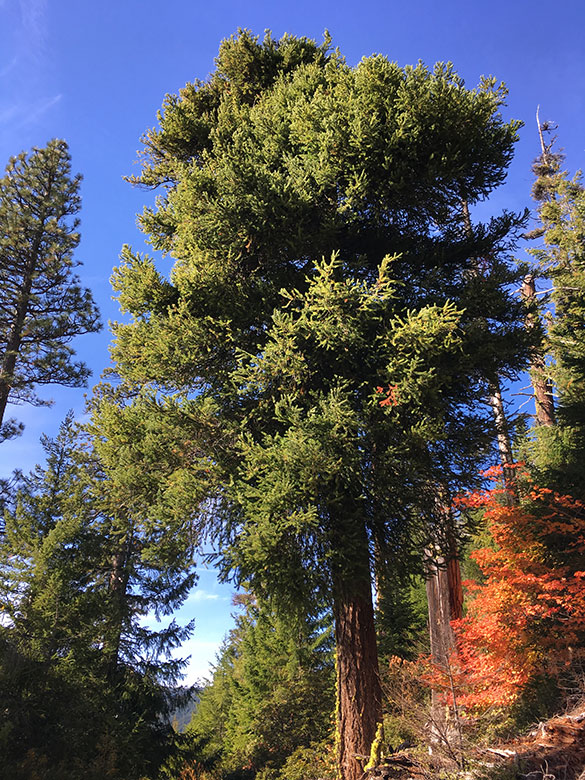
“Everybody knows a turkey and some mistletoe
Help to make the season bright…”
Did you know that we have an unlikely cousin to the holiday mistletoe growing prolifically across Mount Hood country? Unlike the species you’re likely to find hanging over a doorway (known as Leafy mistletoe of the genus Phoradendron) or even from our Willamette Valley white oak stands, this cousin is the lesser known Dwarf mistletoe, of the genus Arceuthobium. And unlike the holiday version, this humble Mistletoe is hard to spot, though signs of its presence in our forests are very obvious.
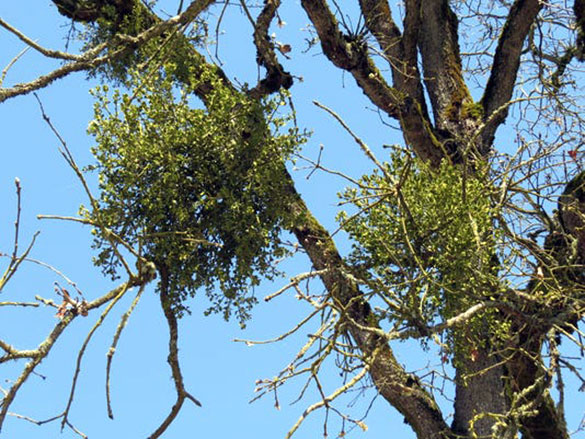
Like their holiday cousins, Dwarf mistletoe are parasitic plants that require a living host to survive, and in our corner of the world their hosts are mostly the big conifers. Dwarf mistletoe grow by extending root-like structures known as “haustoria” into the growing tissue of their host, and producing shoots outside the bark of their host where flowers and fruit form, and where their seeds spread to other hosts.
Sound a little creepy? Perhaps, given how we humans tend to view parasites. But these plants are also quite fascinating, and historically they have had a bad reputation, thanks to the timber industry and its enduring reluctance to see the forest for more than the saw logs they might produce.
So, here are some things to know (and maybe even love?) about Dwarf mistletoe next time you venture out among these humble parasites:
1. They are commonly called Witches Broom.This is self-explanatory, as an infected tree (especially Douglas fir) tends to grow dense masses of branches in response to an infection that can hang down like brooms. This is the easiest way to spot Dwarf mistletoe in the forest.
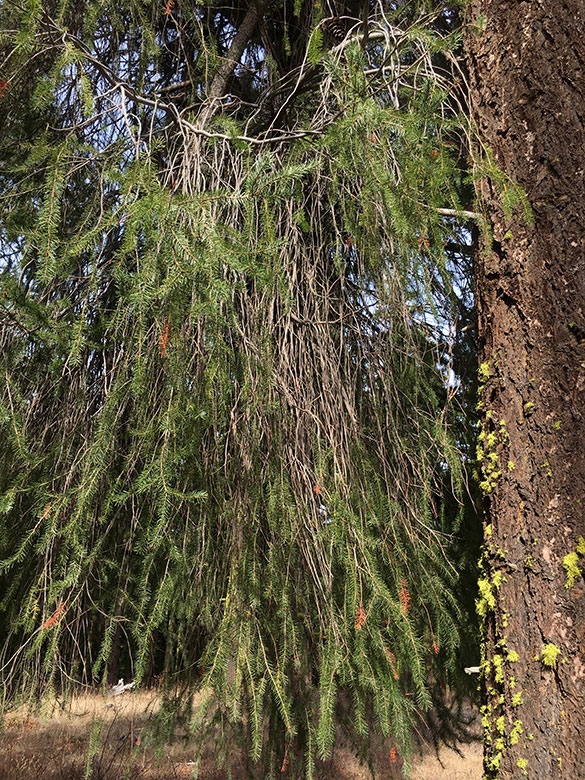
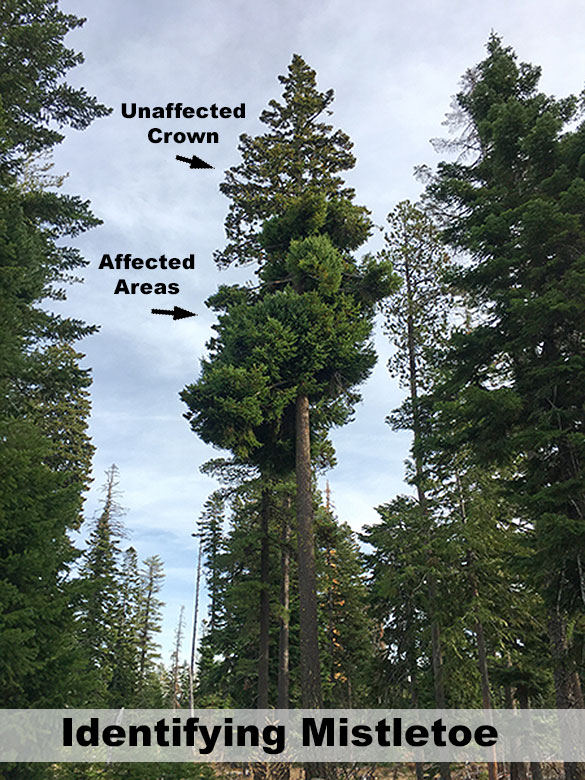
2. They are gendered.Mistletoes occur in male and female forms, with the male plants producing pollen and the family plants producing fruits and seed. Both the male and female forms can reside in the same host — and a single host can have multiple active Mistletoe infections.
3. Their berries pack some heat!Ripe Mistletoe berries are designed to explode in late summer, shooting seeds as much as 50 feet in the air (!) to land on nearby, potential host trees. Their seeds are sticky and adhere to whatever they land on, and this feature also means that birds and small animals help disperse the seed when they visit host trees with ripe Mistletoe fruit and carry the seeds to other trees on their fur or feathers. While this firepower allows Mistletoe to spread to nearby hosts and to the understory below, it also allows the plant to move upward in its host tree, as much as one foot per year.
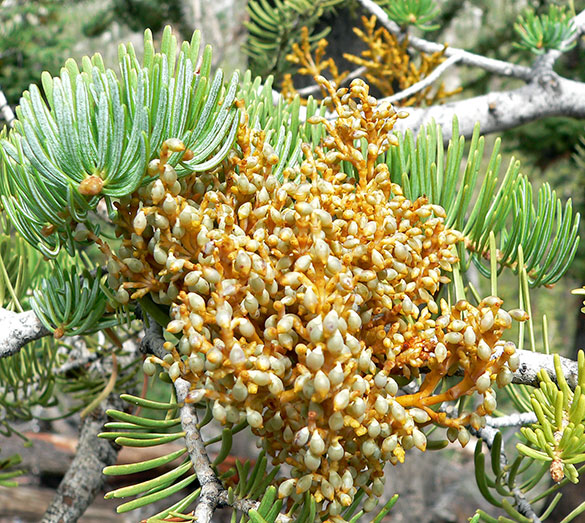
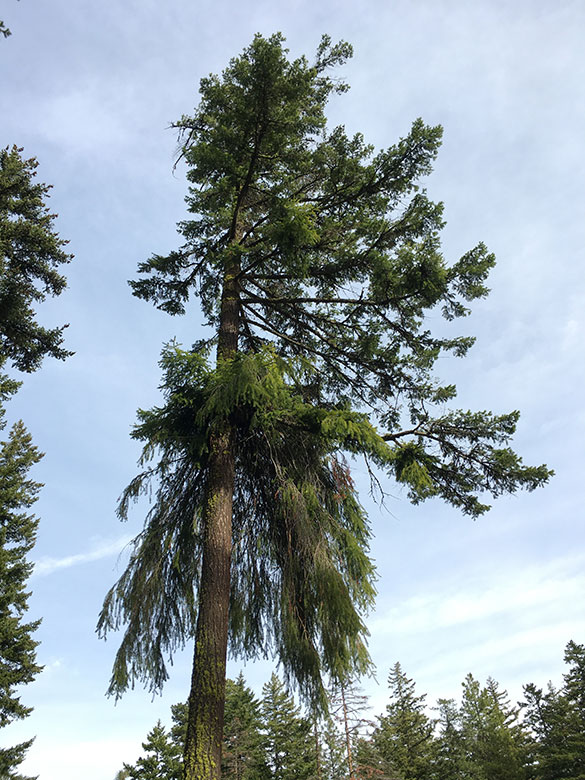
4. They like their hosts on the softer side. With seeds shooting in all directions at high velocity, Dwarf mistletoe might seem somewhat indiscriminate in their reproduction. But it turns out they are playing the odds, as sprouting seeds usually invade host tissue that is less than five years old. This is why young trees in the understory beneath a large, infected tree are so vulnerable. However, Mistletoe typically does not infect trees younger than 10 years, for reasons yet unknown.
5. They’re early — and prolific — bloomers.For the first couple of years after a Dwarf mistletoe seedling has attached to a new host, the young plant quietly sends its haustoria into the tree’s living tissues, feeding on water and nutrients from the host as the Mistletoe grows. After a couple years, the site of the infection swells and over the next few years the new Mistletoe begins producing aerial shoots, flowering and eventually producing fruit. Within five years, a new Mistletoe plant has gone from seed to what can be many successive cycles of fruiting from a single infected site on a tree.
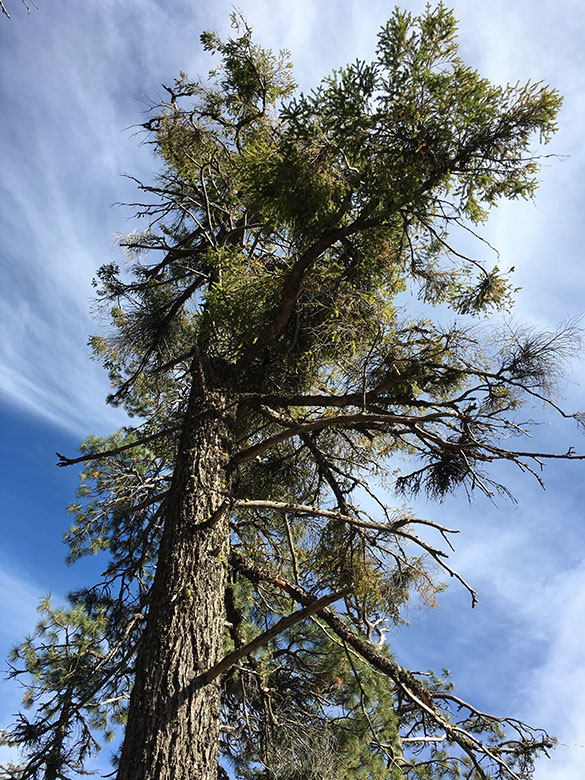
6. They like the East side.Dwarf mistletoe species grow throughout Oregon, but in Mount Hood country they are most prolific on the dry east side of the mountain. This isn’t because they have an aversion to wet weather, but instead, because…
7. ….they are host-species specific!There are many species of Dwarf mistletoe, and most specific to just one or two host species, Many of these preferred host species also happen to grow on the east slope of the Cascades. Here are the most common Dwarf mistletoes in Mount Hood Country, most named for their hosts:
• Douglas-fir dwarf mistletoe
• Western larch dwarf mistletoe
• Western dwarf mistletoe (host is Ponderosa pine)
• Lodgepole pine dwarf mistletoe
• Western white pine dwarf mistletoe
• True fir dwarf mistletoe (hosts are White fir and Grand fir)
• Western hemlock dwarf mistletoe (also infects some true firs)
• Mountain hemlock dwarf mistletoe
The effects of these Dwarf mistletoe species on their hosts vary widely. Douglas fir is most affected by its species of Dwarf mistletoe, often producing very large brooms. Western larch can also be heavily affected when their brittle limbs give way to the weight of brooms. By comparison, Hemlocks less than 120 years in age are typically not affected by the infestations and other hosts show very little effect from infections. This is why we’re unlikely to even notice many of the Mistletoe-hosting trees in our forests.
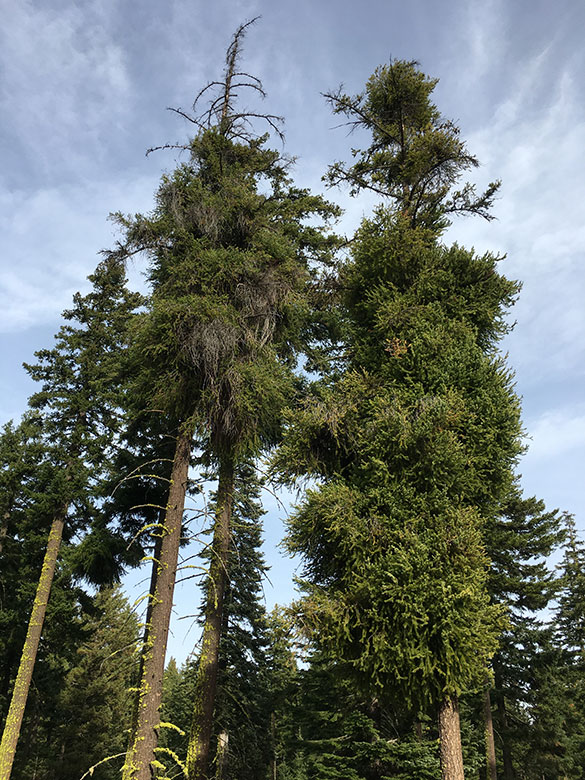
8. They can eventually kill their hosts.Heavily infected trees can eventually lose so much foliage from having their living tissue invaded by multiple Dwarf mistletoe infections that they can no longer survive. This is common among Douglas firs, where its accompanying Mistletoe species significantly disrupts growth and produces very large brooms. But the Mistletoe infestation is often simply the gateway to other invaders that are often more fatal to the host tree. These include bark beetles, rusts and other fungi that invade trees affected by Mistletoe. Heavily affected trees typically die 10-15 years from their first Dwarf mistletoe infection.
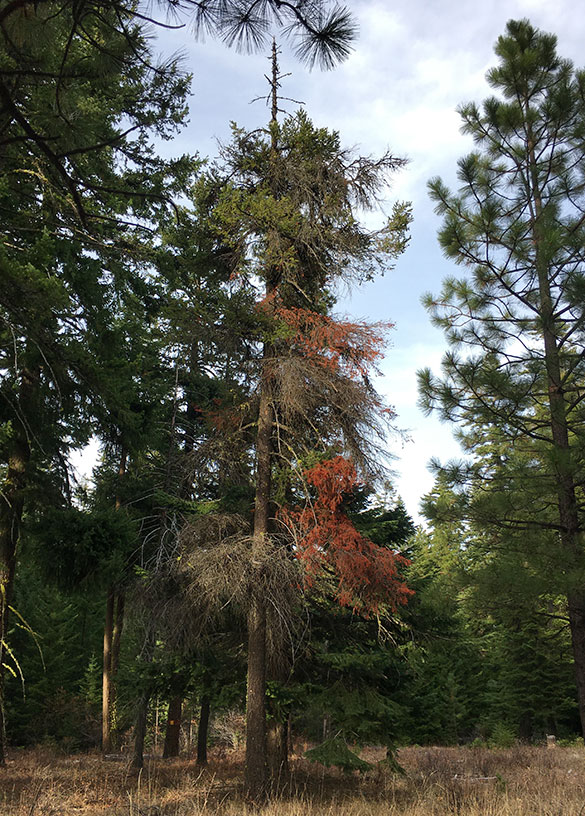
9. They favor stressed trees.Trees growing in poor soils or affected by drought are more susceptible to infestations. This could be why Douglas fir on the dry east side of the Cascades are more likely to host Dwarf Mistletoe. But this is also an example of the role that this parasite plays in forest succession and, over millennia, the evolution of its host species. By preying on the weakest among their hosts, Mistletoe mimic so many examples in nature where predation on sick or frail helps improve the gene pool of the prey species.
10. They love fire suppression. We have been learning our lesson from a century of forest fire prevention the hard way in recent years with the string of long-overdue, catastrophic fires that have swept through Mount Hood country. This is especially true on the east side forests, where regular, low intensity fires are an important part of forest healthy. Fire suppression since the 1920s has left us with stressed, unhealthy forests with enormous fuel buildups that will take decades to restore to health. But this is good news if you’re Dwarf mistletoe, as the parasite thrives in these forests, spreading quickly among the stressed hosts.
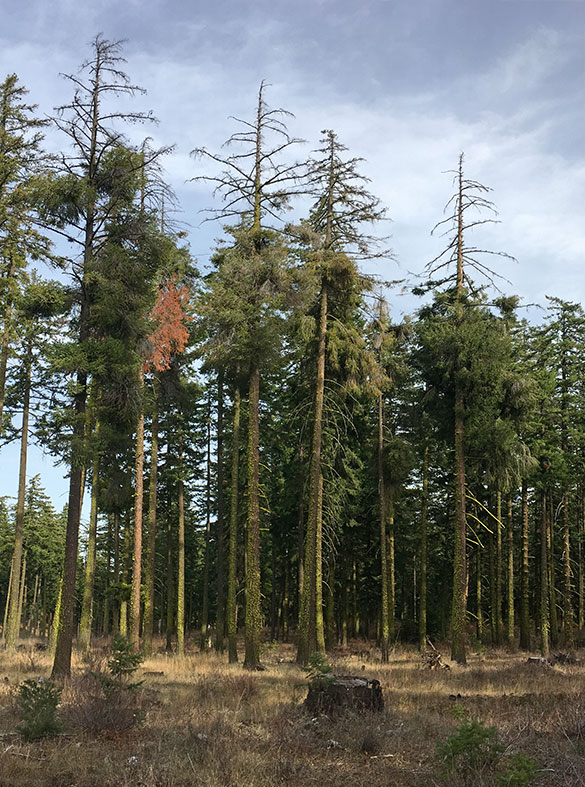
11. They love forest plantations. There are so many reasons why mono-culture tree plantations in logged areas of our forests are a bad idea, and susceptibility to Mistletoe infestations is just one more, since these parasites are host-species parasites. This is especially true for Douglas fir plantations, the timber industry favorite, and also a species that is more significantly affected by Mistletoe infections than most other conifers. Dwarf mistletoe can spread especially quickly in these overgrown, same-species plantations.
12. They create valuable habitat! Yes, they are parasites that can kill their host, but Dwarf mistletoe have been part of our forest ecosystem for millennia and are just as natural as the forest itself. The brooms they create high in the crowns of conifers might be unsightly to us, but they provide habitat for birds and small mammals for nesting and feeding, and chipmunks feed on their stems and seeds. Large brooms also provide protected resting sites under infected trees for deer and elk.
Killed treetops of infected trees also provide perches and nesting sites for raptors and owls. Decayed areas in standing trees resulting from fungi invading Mistletoe-infected sites can serve as essential habitat for cavity-nesting birds and small mammals, too.
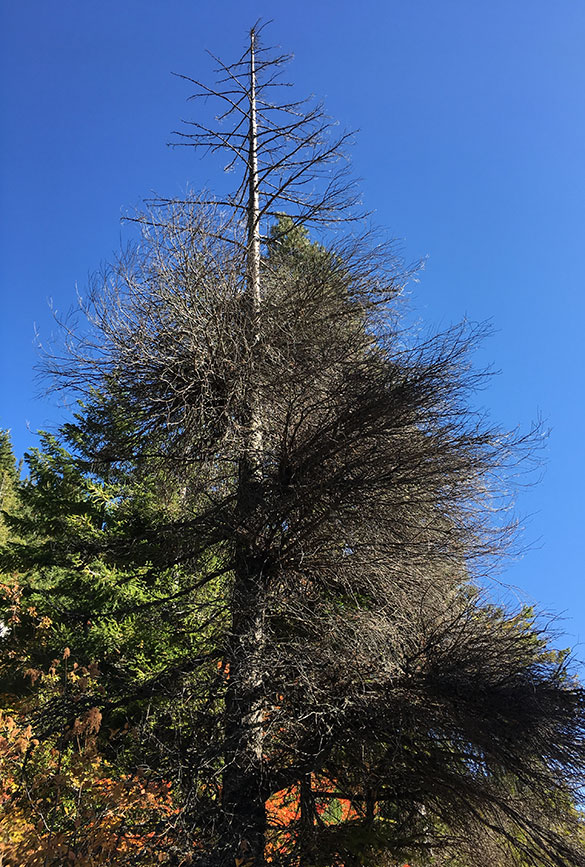
13. They are good for forests!Really? Yes, because in a healthy, balanced ecosystem, the effect of Dwarf mistletoe in selectively killing trees is beneficial to the forest by creating canopy gaps and standing snags that are known to increase plant and animal diversity. Likewise, healthy, multi-story forests are also less vulnerable to severe Dwarf mistletoe infections, which (of course!) is how this ecological balance has evolved in our forests.
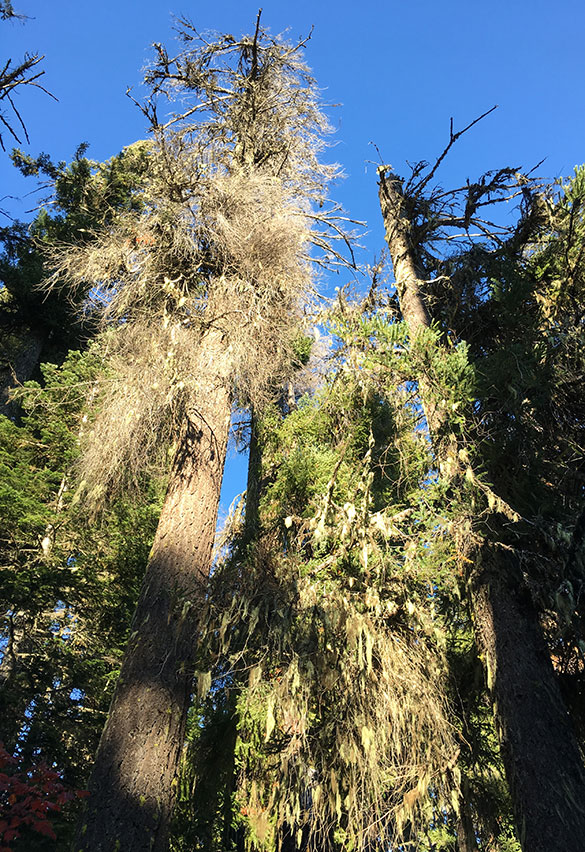
That last point underscores that the “solution” to the widespread Mistletoe infections we see in many of today’s east side forests is really to recognize the abundance of Mistletoe as a symptom, not the problem. Restoring today’s stressed, logged-over forests and clear-cut plantations to the mixed conifer stands that once thrived across Mount Hood country is the simplest answer. It’s also the only sustainable answer.
The good news is that the Forest Service is gradually moving in this direction with gradual plantation thinning starting to take hold in the Mount Hood area and even the occasional use of fire as a management tool in other parts of Oregon. Not everyone agrees with plantation thinning, but so far, the results appear to support continuing this practice, at least until the most overgrown plantations have been thinned to a semblance of a natural forest.
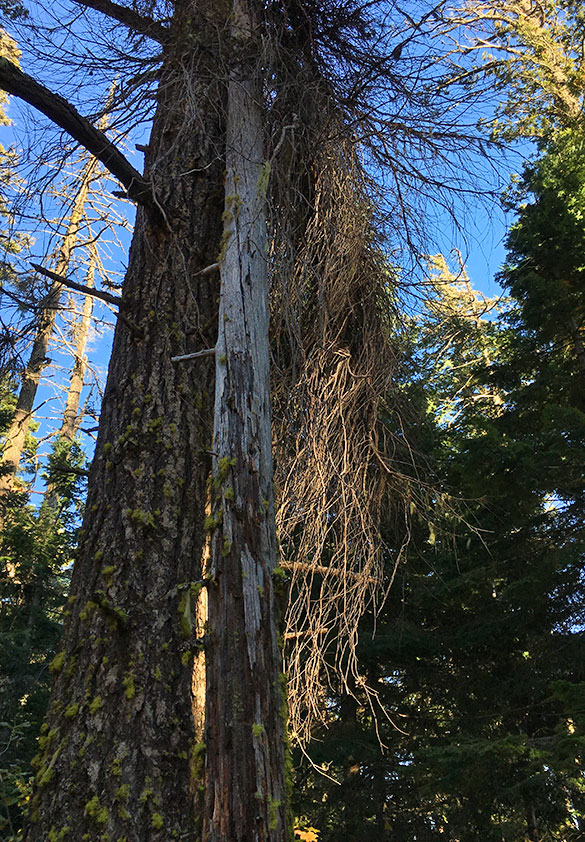
Unfortunately, the current Forest Plan guiding these decisions for Mount Hood is nearly 30 years old, and the plantation thinning being done under this plan is not being done with a vision or bringing natural forests back, but rather, to simply prepare the remaining forest for more timber harvests.
This is yet another reason why a new plan and long-term vision of forest health is desperately needed for Mount Hood, one that centers on sustainable uses like recreation, native fish recovery and clean drinking water for our growing region, not just meeting timber harvest quotas. I’m confident that we’re gradually moving in that direction, if very slowly.
In the meantime, take a second look next time you’re out in the forest to appreciate this lesser-known parasite… when you find yourself standing under the Mistletoe!
Thank you so much for your usual thorough and interesting discussion of a well researched explanation on forest health.
Best to you in the coming year end. Look forward to your next article on our forest.
LikeLike